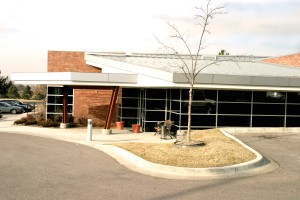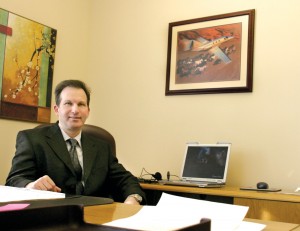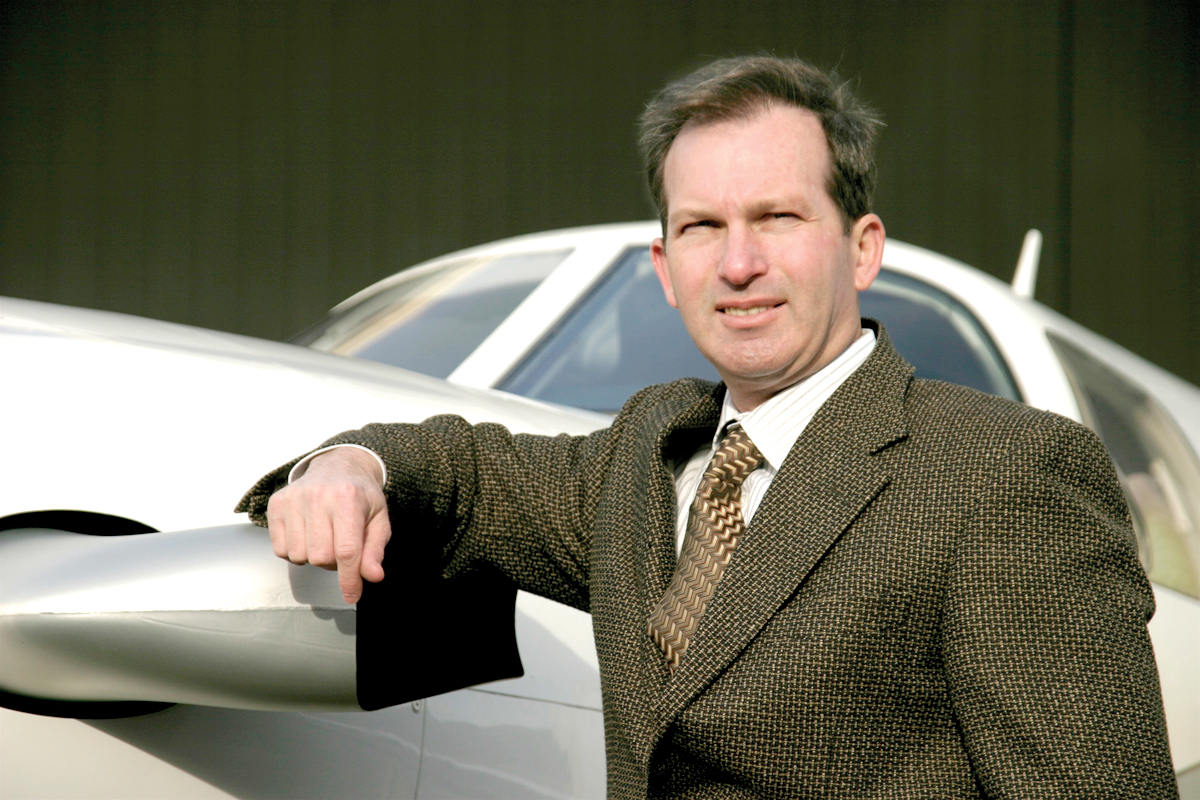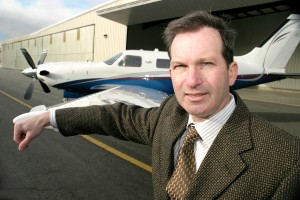By Jeff Mattoon
Dr. David P. Schreiber will be one of the first on his block, in his town, in the country to be the proud owner of the new breed of aircraft, the VLJ. We probably still need to remind folks that VLJ stands for Very Light Jet, but the need for a reminder is probably short lived as the new category builds steam—or thrust as it were. Dr. Schreiber has laid down a deposit on a new Cessna Citation Mustang and he can’t wait to take delivery.
All 6-year-old David Schreiber could think about was being an astronaut. That made complete sense in 1962, as John Glenn became the first American to orbit the Earth, continuing the new space race, pitting the United States against the world to be the first to land on the moon by the end of the decade, as challenged by President John F. Kennedy.
These were exciting times, filling youngsters’ heads with thoughts of flight that, for some, provided a catalyst to change their lives and the lives of others—and young David Schreiber wanted all that this new hope had to offer.
He was a new teenager when Neil Armstrong took the “One Giant Leap for Mankind” on the moon, providing the lad inspiration to be one of the first to take an even bigger leap—to Mars. All he had to do was get through school and enter the astronaut program. Simple.
To be sure, Schreiber was a smart young man. He exited high school and entered Stanford University with a hugely ambitious goal of creating his own major to satisfy his now two passions: medicine and space.
“At Stanford, you could do that,” he said. “So I created a major called space medicine, and began taking courses like astrobiology and astrophysics and regular biology and pre-med courses.”
It was a demanding load and as he found out, a very complicated major. So Schreiber made a decision that would affect thousands of people for the better. He dropped the space portion of his major and applied to pre-med.
The decision wasn’t solely based out of the difficulty factor. Pragmatic Schreiber realized that the space program was moving on quickly and had actually perhaps peaked. So when he graduated—after just three years—he was faced with a choice.
“I thought ‘They don’t want a 20-year-old,'” he recalled. “They were recruiting Ph.D. engineers and 10,000-hour pilots, so I decided to go to medical school and revisit the whole astronaut situation later.”
So Schreiber did what thousands of young men and woman have done before him: he completed school, grew a family, started his own medical practice and suppressed his dream of flying. That is until about the age of 30.
“I really wanted to learn how to fly, and I was at a point in my practice where I had the means to do it,” he said. “But I really wanted to learn aerodynamics well, so I became a glider pilot. I wanted to know that planes could fly without engines. I wanted to be self-sufficient. To know that I didn’t need anything other than wings. I wanted to feel the rush of the air, and I wanted to know what made it fly and what made it stall. I wanted to know the joy of flying and the glider was pure joy.”
Aeronautically, things were going well for him. That is until they closed the glider port.
“I didn’t fly for about six months to a year,” he said. “Then I decided to explore powered flight. So I went to a local flying school at Centennial Airport in Colorado, where at the time all the flight instructors were on call. I paid for an introductory flight and just fell in love with flying at that point and never looked back.”
The Colorado resident met up with CSI Steve Arthur, who happened to be at the school on his day off with his dog.

Littleton Radiation Oncology, which houses the Prostate Seed Center, is the only single-physician owned, free-standing radiation clinic in Colorado.
“I was real lucky to get hooked up with him,” Schreiber recalled. “At the time, it was obvious to me that Steve was an experienced pilot. He was between airline jobs and was going to school to get his master’s in something to do with teaching. That was great because his teaching style fit my learning style perfectly.”
Schreiber earned his private in six months and his instrument in six months. He had that for six months when he went for his commercial, which took him three months to obtain.
“Steve was my instructor the whole way and we still go up every couple of months or so,” he said.
While his piloting skills flourished, his doctoring skills mushroomed. Dr. Schreiber selected oncology, the study and treatment of tumors, as his specialty, and thousands of patients are glad he did.
Schreiber is the president of Front Range Radiation Oncology, which operates the Littleton Radiation Oncology clinic. It’s the only free-standing radiological clinic in Colorado solely owned by an individual physician. Schreiber treats all types of cancers, but in particular, prostate cancer.
In 1994, he began using a type of treatment that at the time was investigational, but after his success, is now a recognized treatment by all major insurance carriers. Brachytherapy involves the implantation of small radioactive pellets, or seeds, in and around the tumor to selectively kill the cancer cells.
Prior to his development of the method, a patient with a prostate tumor had few options for treatment; usually it involved external radiation treatment or surgery, which carry with them extreme side effects including incontinence and impotence. Brachytherapy was used in the past, but only as an adjunct treatment. Schreiber thought, “Why not make it the primary mode of treatment for prostate cancer?”
That’s what he did, and the results are overwhelming. Seed implant therapy is less expensive than traditional treatments, length of therapy went from seven weeks to 45 minutes, and as mentioned earlier, there are minimal side effects.
“We’ve cut the death rate by 25 percent,” he said. “We’ve increased the early detection rate, we’ve cut the cost of therapy and we’ve improved the quality of life for men, because these men have far fewer risks when they have a seed implant than when the have a prostatectomy. That is extremely gratifying for a physician.”
Schreiber’s time is at a premium as he improves his methods and applies them to other cancers, including an ambitious goal of reducing breast cancer treatment from the traditional treatment time of seven weeks down to 45 minutes. He is asked to consult and aid in product development all over the country, so it was only natural that his interest in flying would cross over to aid him in the medical practice.
Initially, he flew across the state west into the Rockies to treat patients, but now limits his flying to conferences and out-of-state consultations and business meetings. He currently has all his hours for the ATP, but is waiting for his Mustang for the type-rating. His purchase of airplanes has been as methodical as his treatment strategies, and it could be a study in a person who understands mission-oriented equipment selection.
“My first aircraft was a Mooney,” he said. “It was a wonderful plane, but it didn’t have the capability of flying into the mountains that I wanted. It didn’t have de-icing and it wasn’t turbo-charged, so I decided to sell it and purchase a Piper Malibu.”
The Piper Malibu, a completely new six-place piston aircraft for Piper in 1983, sported a sleek, sunken rivet fuselage, a pressurized cabin, long wings giving it great fuel efficiency and a max cruising speed that exceeded 200 knots. Range was over 1,500 nm with a service ceiling of 25,000 feet. Schreiber bought and sold three Malibus before he decided that engine reliability was of prime concern.

A framed picture of the Cessna Citation Mustang reminds David P. Schreiber, M.D. of swift and smooth flying days ahead.
“The Malibus were great, but the piston engines were unreliable,” he said. “I never had an engine failure, but I had the last one in three times for AD’s (airworthiness directives), things cracked, and oil issues. Then the Lycoming crankshaft was the last straw; that’s when I decided to go with the Piper Meridian.”
In 1988, the Malibu became the Malibu Mirage, with a beefier Lycoming 350-hp piston engine. There were other changes including redesigned electrical system and interior modifications. And then in 1998—after numerous improvements to the Mirage—The New Piper Aircraft, Inc. released the Malibu Meridian.
The Meridian is genetically a Malibu, but it’s been genetically altered. Starting at the nose is a Hartzell four-blade, constant speed, reversible propeller bolted to a Pratt & Whitney 500-hp turboprop power plant. All of that sits in front of a stainless steel firewall. The wing area was increased to lower the stall speed to 61 knots. The tail and rudder areas were also increased.
The first Meridian Schreiber purchased was a 2001 model, and he liked it a great deal. It was quicker and smoother with increased engine reliability, but he quickly discovered its limitations.
“As my business and family grew, it didn’t have enough useful load, and it had temperature limitations that confined me to 24,000 feet or lower in the winter,” he said.
Once again it was time for a change. Another Meridian would get the nod from Schreiber. This time he purchased the 2004 20th Anniversary Malibu Special Edition Meridian.
“The new plane has fuel recirculating, a load increase, and much better avionics with weather uplinking. It could actually be RVSM certified, but that’s just too much money to spend for the benefit. I’ll wait for the Mustang for that,” the good doctor said with a gleam in his eye.
When you talk with Schreiber, you understand quickly that he knows what he’s talking about, whether it’s medicine or aircraft. His thoughts flow from his head to his mouth quickly and smoothly as he describes an innovation he suggested to the local avionics integrator on his new Meridian. The system was configured with the Integrated Hazard Avoidance System, receiving its signal from GPS 1 only, and no signal from GPS 2. Schreiber noticed this upon the power-up sequence where GPS 2 fired before GPS 1 and the IHAS showed a “no signal” indication.
“I asked (the avionics integrator), ‘What happens when your GPS 1 goes down?'” he recalled. “He said ‘Nothing, you can’t use it.’ I said, ‘It sounds reasonable to me that if you have two perfectly good GPS units in your airplane and one goes down, you should be able to switch to the other one.’ He said he agreed, but didn’t know how to do it and he’d have to call Honeywell. Honeywell said that no one had ever asked them that question before.”
Between Honeywell and the integrator, they created a switch between the two GPS units to feed the IHAS. (By the way, can you switch between GPS units in your plane?)
With the faster airplanes, Schreiber enjoys traveling on his own schedule.
“I often beat the airlines wherever I’m going, unless I need to make a stop,” he said. “Even then, when I fly to Florida, I’m only behind about an hour, so that’s worth it.”
Schreiber has been strategic in his flying and his business.
“The new Meridian’s capabilities have really made flying fun,” he said. “That’s why I started flying in the first place. It’s nice that I can develop my business around my flying, and I look forward to business trips in my plane. That said, I specifically choose larger cities to conduct business, because if there’s a large thunderstorm that I don’t feel comfortable with, I’ll leave my plane and buy a round-trip commercial ticket. I’d rather return the following week and fly safe, because whatever the cost of the ticket, it’s not worth my life. Fortunately, now with the newer Meridian, I don’t have to make that choice as often.”
The Mustang will be Schreiber’s first multi-engine plane, and that’s by design. He has intentionally avoided multi-engine aircraft.
“The twin-engine plane is trying to kill you,” he said. “I can feel it. The plane is saying ‘I’m going to kill you, and what are you going to do about it?'”
While everyone doesn’t hold his views, there are certainly many who have as strong an opinion.
“On takeoff, you have about five to 10 seconds to figure it out,” he said. “And it’s possible, by the recent crashes at Centennial, that two pilots may not have figured it out.”
Schreiber said he doesn’t like having an engine on each wing.
“At least with a single-engine aircraft, when the engine dies, you put the nose down and there’s no question about what’s going to happen,” he said. “It will glide because it’s designed to be stable, and more than likely, you will land—alive.”
When asked about the impending multi-engine type rating required for the Mustang, Schreiber replies, “With that aircraft, it doesn’t matter if you lose an engine. It’s more unlikely to begin with, but if you do, it’s all centerline thrust, so there’s no, or very little, adverse yaw. Again, it’s designed for stability.”
That thinking is at the heart of the VLJ safety debate. Some are concerned with inherent speed that jets bring and that some owner-pilots won’t handle that speed well, while others counter that the speed is balanced because of simplified cockpit workload.
All the while, Dr. David Schreiber will gladly fly his Meridian and wait for his Mustang.
For more information about the Prostate Seed Center or Littleton Oncology Radiology, call (303) 738-8700, or visit [http://www.littletonradiationoncology.com].












